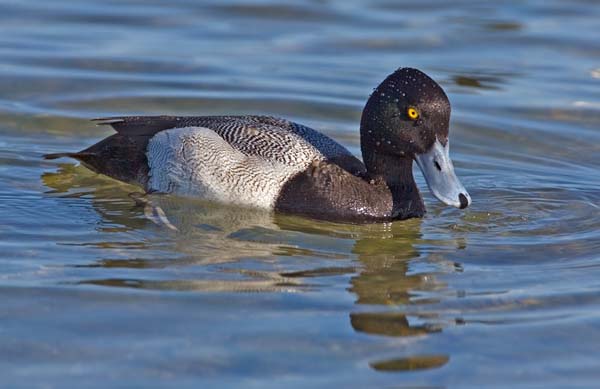Wildlife North America . com North American Animals - mamals, birds, reptiles, insects |
Lesser Scaup (Aythya affinis)
Lesser Scaup, Fulton Harbour, Fulton, Texas Photograph by Alan And Elaine Wilson. Some rights reserved. (view image details)
LESSER SCAUP FACTS
DescriptionIn the breeding season Lesser Scaup males have black head neck, breast and front part of the back. The rest of the back is white with fine black barring. The rump is black and the sides and belly are white Non breeding males are more brown in color, and similar to females, but do not have a white patch at base of bill (although they may have some white feathers on the face). Females have dark brown head and neck with lighter mottling, dark brown back with white speckles, pale brown breast, white belly, white patch at the base of bill, dark brown tail. Immature Lesser Scaups are similar to adult female. Size length 39cm - 46cm. Wingspan 68cm - 78cm Environment lakes and ponds. Food aquatic insects and other aquatic invertebrates, seeds, aquatic plants. Breeding Nest is a bowl made of grass or other plant matter, lined with down. The nest is located on the ground or on mound of vegetation on the water. Lays eight to ten (up to 14) olive or buff-green eggs. Range The Lesser Scaup breeds from Alaska and western Ontario southward to Minnesota, northern Colorado, northern California. Winters across United States, Central America, northern South America Classification
Relatives in same Genus Redhead (A. americana) Ring-necked Duck (A. collaris) Tufted Duck (A. fuligula) Greater Scaup (A. marila) Canvasback (A. valisineria) Home | Mammals | Reptiles | Birds | Insects | Privacy Policy | Disclaimer | Contact Us |